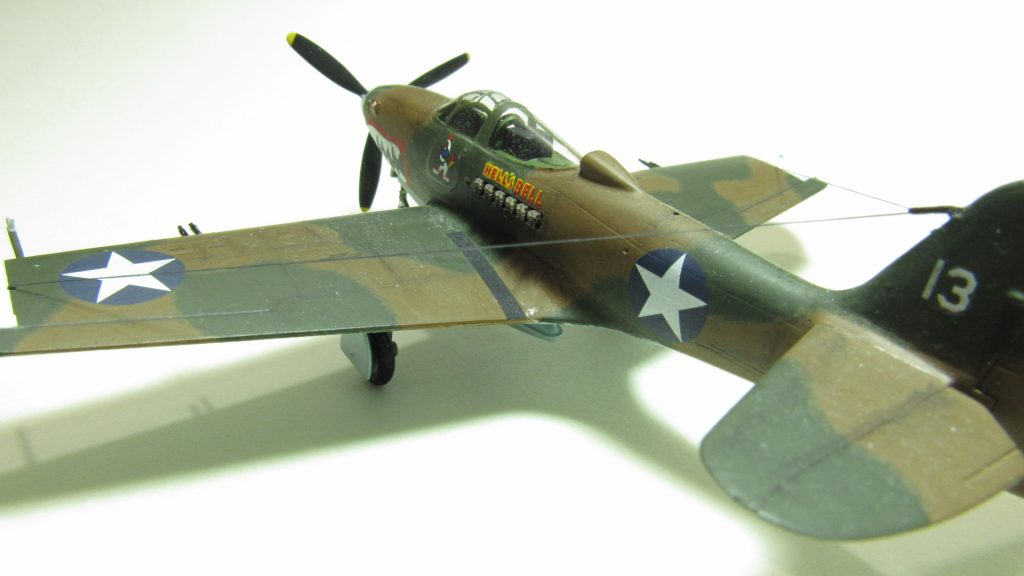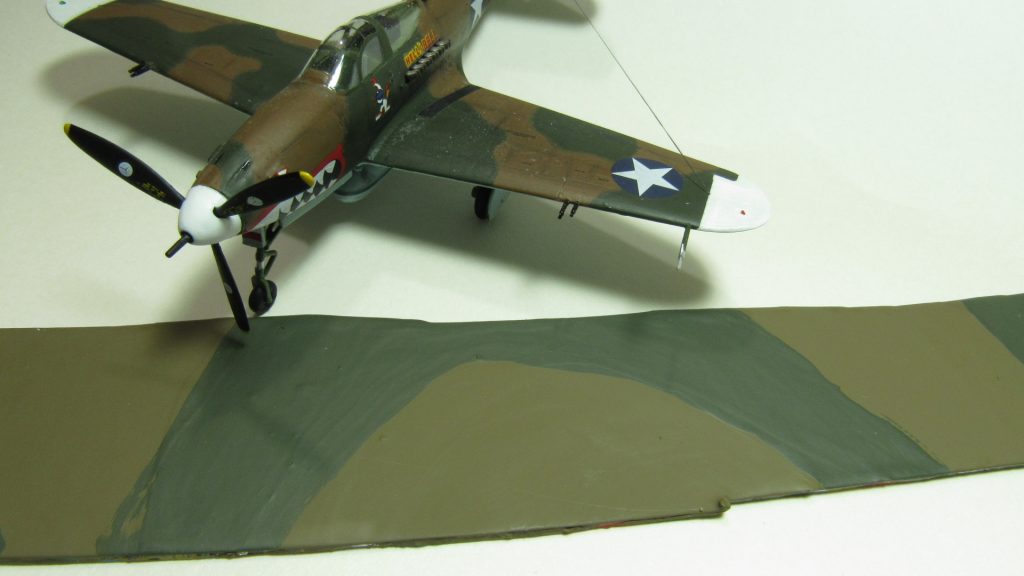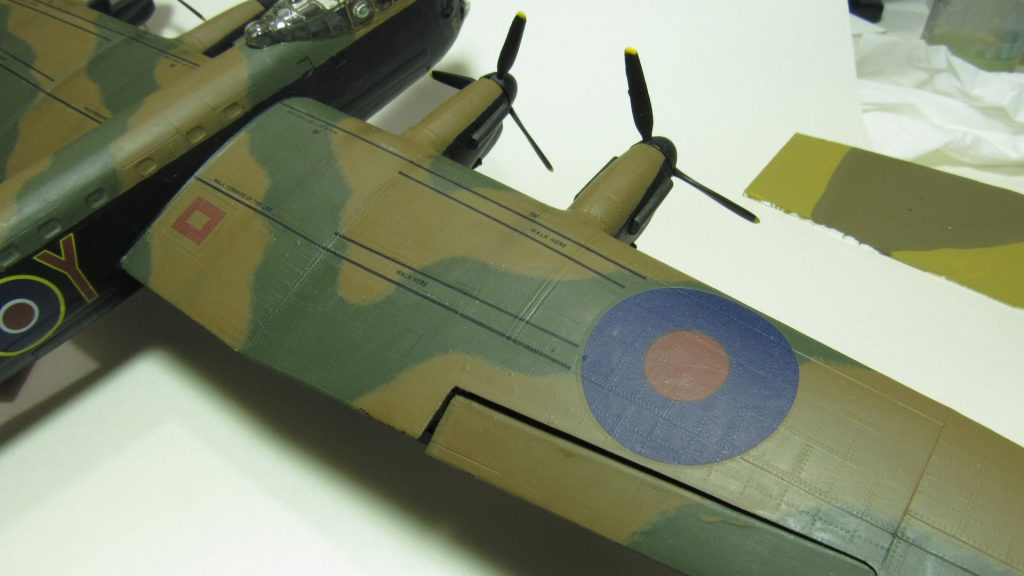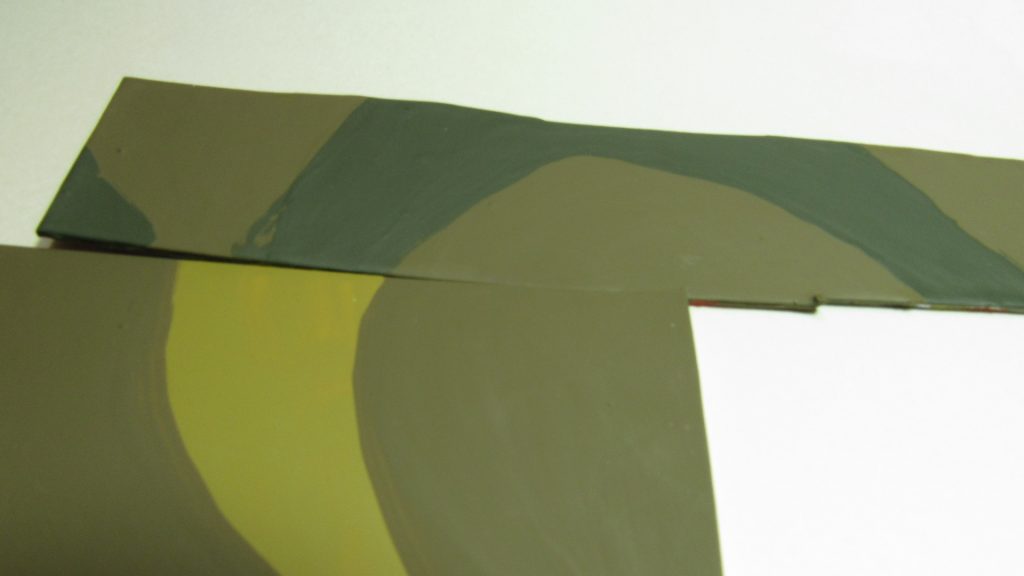
Down to Earth
This entry is going to be an attempt at a “two-fer.” I’m going to talk about two things in one blog entry. It may just end up being confusing (I’ve done this before) but I’ll try to avoid that outcome by telling you WHAT two things I’m going to discuss.
First, I’ll talk about the outstanding videos on Youtube from Greg’s Airplanes and Automobiles. Greg is a fellow who knows a lot about turbo-chargers and he explains them for those of us who have often wondered just what all that was about during World War II.
Then I’ll discuss the color used by the RAF in that same war that was called “Dark Earth.”
I’ll be combining these topics here today because they both pertain to the history of a little hot-rod of a fighter plane that I like to call the Bell P-39 Airacobra.

Rumor has it that the Airacobra was the hottest thing since Claudia Black (What are you lookin’ at? WHAT?) but it was stupidly f*cked up by the U.S.A.A.F. who removed the supercharger required to make the aircraft battle-worthy and so brave lads were killed over the Solomons because Uncle Sam was stupid. The resulting sick dog of a worthless pig aircraft was the result of no supercharger combined with a huge, dumb super heavy cannon that shot through the propeller and was intended to be some crazy crap like a plane built around a huge cannon that shoots up tanks or something– and we all know what a bad idea that was.

The consensus within the faux-historian community is that the Airacobra was an experiment that failed and many a brave young American died to prove it.
Which is cool, except for the part of the story that is bullshit, which is almost all of it.
As Greg explains in his great video on superchargers and turbochargers the problem with the P-39 was that the aircraft was just too small to mount one of the turbo-superchargers available at that time. If you’re curious about this, you SHOULD watch all of Greg’s videos on this subject. Fascinating stuff.
So the P-39 was left with a second-rate supercharger, compared to the first rate ones on, say, the Spitfire or the U.S. Navy’s own Wildcat and later Hellcat– but it DID have a supercharger. Any and all goofy crap you have read to the contrary is just wrong.
But why did it get a second-rate supercharger? The sad fact is that the U.S.A.A.F. was wildly aroused by new technology (as the USAF is today) and just could not stand not to have the “newest and greatest.” They chose the mighty turbo-supercharger as being bigger, better, cooler and more bitchin’ than anything else in the world, so the U.S had to build huge fighters (for the time) to be able to carry these monster engines into the air. The P-38 and P-47 were the result.
The Thunderbolt and Lightning came from this huge government program to build planes that would fly above the enemy and be impossible to stop because they were just higher and faster. It made sense, kind of, but ultimately we’ll never know how this “arms race” would have come out in the long run because, as has been the case so many time, once Uncle spent a few bazillion dollars on it, a new technology came along and the old one went in the garbage. In this case, it was the jet engine–and, to some extent, the excellent superchargers on the Merlin engines of P-51 Mustangs.
The Airacobra was just too little to stuff all the hardware for even the smallest tubo-supercharger (aka “turbocharger”) into it. So it got stuck with the supercharger that was a part of the Allison engine, which had always been intended to be coupled with a turbocharger.
But even without the turbocharger, it was (potentially) the finest low-altitude dogfighter in existence in 1941, and would have kicked the Zero’s ass if the U.S. Army hadn’t dug in its institutional heels and insisted that a AMERICAN fighter plane had to be either a high-flying speed demon or an attack plane. Airacobras (and Warhawks) went into battle without the confidence of the “brass” and they were poorly employed and yes, to that extent, the U.S. Army lived up to its reputation as kinda stupid about some stuff (see the history of the M-16 for more info on that).
But the Russians proved that he Airacobra was a beast of a fighting machine by tearing out the extra guns and sending them to the infantry in Stalingrad, and also removing other weighty-but-useless crap like armor and ashtrays, and they ate FW-190’s ALIVE.

Moving on…
“Dark Earth” is a bitch of a color to mix. You may have looked at the Airacobra model and thought “Oh, it looks like he got the colors right, anyway!” or something but the test palette above shows the proper shades for RAF Dark Earth and Dark Green, next to the Airacobra which doesn’t match. Of course, the origin of this was my attempt to do something dumb and make my American plane look SLIGHTLY different from the RAF examples in order to reflect that it was painted using “equivalent” colors, which in the wide-open days of 1940 meant just about anything.
But we all know what a proper British Lancaster should look like, yes?

Looks like one of the restored Lancasters, yes? Now check out that inconvenient truth over yonder on the upper right.
If you get the Dark Earth wrong, it will foul up your RAF desert camo. Middle Stone will look WAY too yellow next to the orange-y shade on the Lancaster there. You can see this effect on official photos of the Tamiya Beaufighter. Tamiya’s model-maker mixes the Dark Earth so it’s way too pretty like Claudia Black (WHAT ARE YOU LOOKIN’ AT?? YOU WANNA TAKE THIS OUTSIDE?!!) and so the Tamiya Beaufighters painted with Tamiya’s mix for Dark Earth always have this “hurts my eyes” yellow blast coming from the Middle Stone color.
It’s because the Dark Earth isn’t right.
Dark Earth should be an ugly, yellow kind of brown.

Only if it has just the right amount of yellow in it will it look right on BOTH the desert and temperate whatever scheme.
If you get a version of Dark Earth that IS NOT yellow enough (like Humbrol’s Dark Earth in recent years) you’ll get a version of the desert scheme where the Dark Earth looks pinkish and the Middle Stone looks yellow and a version of the temperate scheme where the Dark Earth looks gray.

No, Virginia, I don’t have photos of all this. Go to any of the forums where they tend to use Humbrol paints straight out of the tins and you’ll see this effect.
In the mean-time, I need to start to mix up a special color just for Wingnut Wings.
Middle Earth.
That dark earth/yellow looks like Panzergelb – perhaps the Danish Army/Navy just copied the RAF colours and nobody got any hint of it.
Depending on the light Panzergelb may look brownish or greenish.
Have fun. 🙂
I think the point I was trying to make about color is probably 1) not worth the time and 2) mostly incoherent. The turbocharger part wasn’t much better. Oh well. The only thing of merit that came out of this was something about Claudia Black.
Agree on 1) not so much 2) – Claudia Black???
The P-39 was a great airplane. Chuck Yeager flew it in the states in advanced training and said in his book it was the best dog fighter he ever flew. The Russians never used it for ground attack, they had that great armored brute Stormovik for that. All the .37mm ammo we sent them was HE not AP.
As for P-40 I read a statement by Russian pilot who said it was not so good if flown by American dogma which stressed managing the engine life. P-40 was slow to accelerate so Russian pilots advanced throttle to full power for takeoff and left it there for duration of mission. Live pilots being more valuable than engines.
Thanks for the color discussion. If only all WW2 airplanes had been photographed in Kodachrome instead of B&W which was so variable in every way.
Ahh, but are you sure your Middle Stone is correct? Then we can open the can labelled ‘Azure Blue’ for even more fun!
I might as well ask here; Do you have a good mix for RAF Middlestone Dan? I have’nt managed to find one yet.
I use the Polly Scale color, which was very close to perfect. Not available any more, and because I stocked up on it, I don’t know what the replacement would be. A bastard to mix, like all RAF colors.
I’d go with Revell’s call-outs on WWII RAF fighter camouflage colours.
Early war: #68 dark green, #82 dark earth, #59 sky
Mid/late war: #68 again, but with #79 for Ocean Grey and #43 for Medium Sea Grey
Tropical: #82 again, a 50:50 mix of #16 and #88 for Middlestone, and a 95% #55/5% #56 for Azure Blue.
It’s not perfect, but is good enough and it does away with all the potential for overthinking and obsessiveness.
Thanks for the info. If Rustoleum stops making model paint I’ll either have to use Revell or switch over to Badger Modelflex.
I think I got something usable in the acrylic menu for middlestone; Revell 16 and 88, 50/50. I will try it on the paint mule and run some of my dark earth choices around it to see whether I like it, but it certainly looks the part. I wish there were empty Tamiya bottles you could buy (for cheap, not the horrendously expensive ‘mixing jars’ they sell, so I could store paints mixes enmasse.
Either that, or Revell and Model Master start getting real with their paint lines and expand them, instead of taking away colours….
I feel your pain. Fortunately for me and other modelers in the Twin Cities, Ax Man has been selling little plastic jars for 35 cents each. They are PERFECT for model paint! How great is that? I bought thirty jars. But I’m not going to tell anybody just in case I need more jars later. I mean, the year is 2019. In the future, people are selfish bastards.